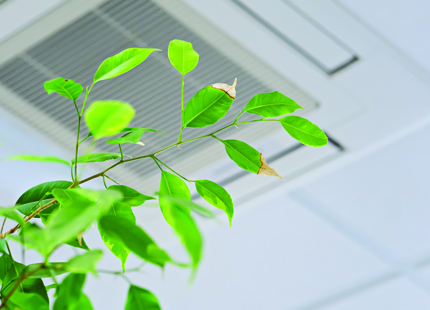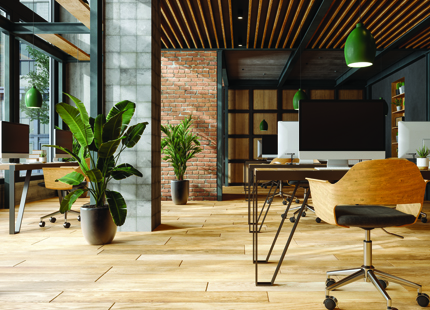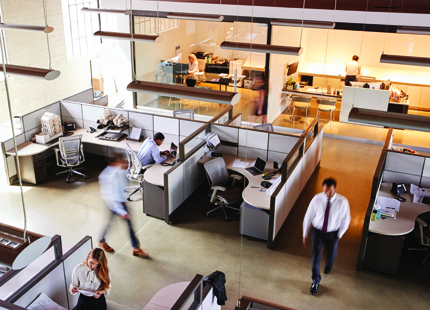27.08.2021
Condair’s Healthy Building Solutions Checklist: How Does Yours Stack Up?
At Condair, we love helping our clients optimize their building operations. Health, like safety and production efficiency, is a significant factor to consider. Not only is good airborne infection control essential towards helping your team’s health and performance, it can also protect other visiting building occupants. For this reason, it is necessary that your building health environment remain hygienic, safe and clean.We’re feeling inspired by our Making Buildings Healthier publication and researchers’ findings at the Harvard T.H. Chan School of Public Health. Today, here’s a healthy building solutions checklist to help you get things shipshape – and future proofed.
Outdoor and Mechanical Air Ventilation
Incorporating fresh outdoor air into an indoor environment is important, as it continually dilutes and replaces particulate-rich air that would otherwise be trapped inside. This is especially key during the wintertime when heaters are cranked up and windows remain shut. When possible, open windows fully for a few minutes, hourly, enabling for the maximum amount of fresh air to be taken in. When this isn’t feasible, during colder months or inclement weather, ensure your ventilation for exhaust and intake are capable of completely cycling the indoor load. Also, don’t forget to adjust your air exchange parameters to accommodate for fluctuations in the current number of occupants and per-room usage. Bear in mind that excessive changes will reduce your relative humidity.
Lastly, for ventilation, consider MERV filters of class 13 or better. HEPA filters are suitable alternatives. Either enable for improved trapping of particulates, minimizing their introduction to the indoor airstream.
Relative Humidity and Temperature
The recommended indoor relative humidity (RH) range for most applications is between 40 and 60 percent. It is important to regulate indoor conditions year-round to stay within these parameters to minimize the health, comfort, and safety risks to building occupants. In addition, this amount of moisturization introduced to the airstream daily can preserve materials, prolong product shelf life, minimize damage, and mitigate electrostatic discharges. Investing in a commercial humidifier is important but be sure to select a solution designed for the load capacity you require. That way, all rooms, and the building as a whole, can benefit from the relative humidity created. The same applies for temperatures – keeping rooms between 20 and 22 degrees Celsius (68 and 72 degrees Fahrenheit) reduces stress on the circulatory system and general productivity. You can also install smart sensors and monitoring equipment to ensure conditions are properly regulated.
Sunlight
Never underestimate the power of daylight. Not only will it reduce the risk of migraines and focus problems for workers, but they’ll feel more comfortable and operate more efficiently with natural lighting present. While common, hanging fluorescent strips overhead is harsh, absorbs moisture, and can interfere with general workforce performance. Instead, when natural sunlight isn’t available such as in windowless rooms, LED lighting with controlled UV-A and UV-B is a suitable alternative – not to mention more energy efficient.Natural Materials
Porous materials of natural construction – not something made in a lab – are capable of absorbing nutrients and moisture. Therefore, they act as worker bees of sorts, contributing towards the healthy microbe community within your building. In that sense, the furnishings, finishes, and even the walls and ceilings of our workplaces can actually contribute towards stronger, more resilient immune systems, all while maximizing airborne infection control by limiting pathogen spread.
Cleaning Strategies
With building maintenance and cleaning, your first instinct may be to disinfect every surface you can reach. However, such an approach may kill healthy microbes that are helpful to the environment – an especially harmful decision if your building is rich in natural materials. In environments such as hospitals and laboratories, of course, disinfectants and cleaning chemicals need to be used, and they’re also critical in special circumstances such as COVID-19 outbreaks. All in all, don’t destroy healthy microbe cultures if you can help it. Otherwise, the harmful ones you’re targeting will have moisture and nutrients all to themselves to snack on, so avoid aiding the enemy!
Indoor Layout
Lastly, consider the way your workplace is set up. Do you have a mix of open and closed spaces, or do you house everyone in a single, larger space? The latter could be a recipe for disaster, health-wise, allowing an outbreak to flash through your entire population more easily. Partitioning spaces and reducing room occupancy numbers has never been more important, and the same applies to enforcing distancing rules. In addition, plants and textile floor coverings with natural materials can help you keep your indoor spaces cleaner.
For more information on healthy building solutions, or for details on our commercial humidifiers or other products, we at Condair are here to help. Contact us today!
Helpful Links:


